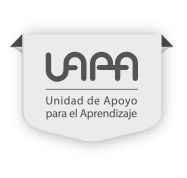Content
Let me introduce myself very shortly, My name is Trish, and I’m 21 years old and I’m a university student. Throughout this lesson I will tell you different bits of my story about how I left my town 7 years ago to study. I will tell you about the different activities that the people and I did in my hometown, and how some of those things have changed through time. We will make some stops in the story so you can tell me about yourself, alright? It is very important though, that we analyze some grammar aspects that will help in the construction of your final task. So, let’s get it done!
So, I’ll tell you about my city. I was born in the city of San Francisco, in Northern California. There are so many interesting facts and cultural aspects that make my city just wonderful, let me show you a few of them.
Before watching the video, let’s find out how much you know about San Francisco. Decide if the following statements are true or false by choosing the appropriate option. You can know your score at the end of the exercise.
- San Francisco is home of the Golden Gate bridge.
- San Francisco is mostly a rural town.
- San Francisco is known by its multicultural population.
- The most famous transportation are the streetcars.
- San Francisco is mostly an old city.
Watching the video: Now, watch the video “San Francisco: The city by the bay”
San Francisco is a beautiful city, isn’t it? I hope you enjoyed the video and some of the interesting facts. Did you learn a lot? Read the following statements about San Francisco and match them to the picture that best represents the statement.
I’m sure you did all just perfect! Now, let’s get a little bit more down to the issue, ok? Let’s analyze our Grammar Structure.
Did you notice how sometimes we choose passive voice over active? Take a look at the following examples taken from the video.
Passive voice is not something new for you, but just maybe you want to have a look at the following animated chart:
Perhaps the fundamental element to consider when forming a passive sentence is whether we want to emphasize who does or did something. Consider the following example:
When Al Capone was held in Alcatraz, he gave concerts with the prision band.
In such a sentence, we want to emphasize the fact that an infamous person such Al Capone gave concerts, which is why we use was held. Who held him? It’s rather obvious, being in prison he was held by the Federal Government; right? So we don’t need to mention it.
Some other times, we have to mention the subject because it makes much more sense, for instance:
The Beatles gave their last full concert at Candlestick Park, SF. on August 29, 1966.
With such an amazing and famous band it makes much more sense to mention them as the subject, rather than:
A last full concert at Candlestick Park SF was given by The Beatles on August 29, 1966.
Got it? The point is to clarify what we want to emphasize in our speech.
The following are interesting facts about my city; some of the sentences emphasize who does the action (active) some others emphasize what is being done (passive). Read the sentences and decide if the passive and active voice are correct in each sentence. Choose the most appropriate option for the following statements. You can know your score at the end of the exercise.
So what do you think of my city? Are you enjoying it? There is so much more to know about The City. Do you want to know what the most interesting landmarks to visit are? We will also have a look at the way we use the prepositions for and since. So here we go!
San Francisco is definitely one of the most diverse places in California, right? Did you notice that most of our landmarks have a lot of history?
Let’s take a look at these four examples:
a) The Cable Car Museum has been opened since 1979
As you can see the preposition SINCE is used to show the moment where something started:
b) Pier 39 has been visited since it opened in 1977
However, this is not the only way we have to express time:
c) The Golden Gate bridge has been opened for 79 years
In C and D we can observe that we mention the amount of time, rather than the starting point:
d) Alcatraz was a Federal Penitentiary for 29 years.
Look at the following chart that will help you sum up this idea of duration:
FOR
Preposition that when used with the idea of time, expresses AMOUNT of time:
i.e. San Francisco has been inhabitated by Hispanics for hundreds of years
Now that we have gone through the main contents of this lesson, it is time for you to practice a bit more with the four skills of the language. So, Let’s start!











